Daylight Saving Time ends this weekend, and that means winter isn’t far away. Now is the time to finish prepping your home for the transition to colder weather. In today’s blog, I share some vulnerable spots on your home that you should prioritize as you get ready for a new season.
The most important thing to remember is winter brings water, often in the form of snow. While water at the beach is delightful, water at home can be a disaster. So, take a walk around your home and think about how water might cause damage.
I did just that at a friend’s house recently, and I’m sharing pictures here to demonstrate how you can put an action plan in place for your home. These are the places you want to examine:
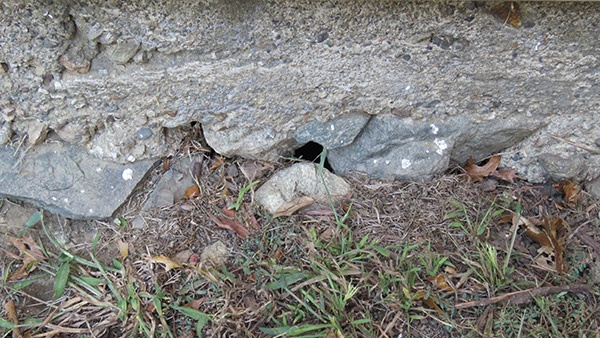 Foundation – Any obvious cracks should be addressed. Generally, any concrete foundation will have some cracks, so your focus should be on the major ones. At this home, a critter of some kind may be burrowing under the house, and a shot of expanding foam will fix that problem. If the crack is major, or there is seepage inside, the crack may need to be exposed and filled with hydraulic cement.
Foundation – Any obvious cracks should be addressed. Generally, any concrete foundation will have some cracks, so your focus should be on the major ones. At this home, a critter of some kind may be burrowing under the house, and a shot of expanding foam will fix that problem. If the crack is major, or there is seepage inside, the crack may need to be exposed and filled with hydraulic cement.
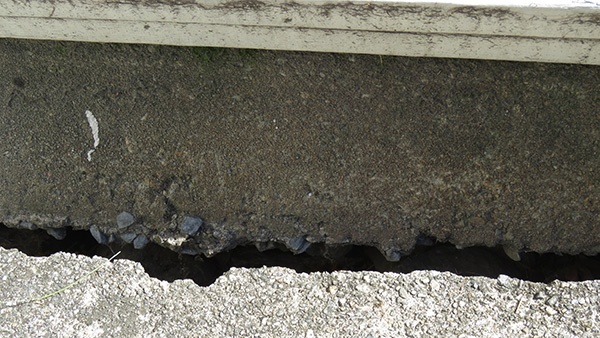 You can see that this home has a large gap where the bulkhead (exterior basement stairs) meet the outside patio. This likely formed because the concrete in the stairs and the patio expand and contract differently. There will probably always be a crack here, and filling it annually with expanding foam can help keep a seal. Expanding foam hardens quickly, so you go back the next day with a sharp knife and remove the excess. Read the label carefully as the manufacturer may call for a quick coat of paint when used on the exterior of your home.
You can see that this home has a large gap where the bulkhead (exterior basement stairs) meet the outside patio. This likely formed because the concrete in the stairs and the patio expand and contract differently. There will probably always be a crack here, and filling it annually with expanding foam can help keep a seal. Expanding foam hardens quickly, so you go back the next day with a sharp knife and remove the excess. Read the label carefully as the manufacturer may call for a quick coat of paint when used on the exterior of your home.
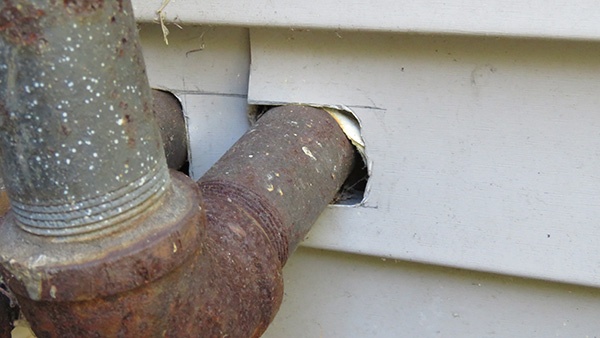
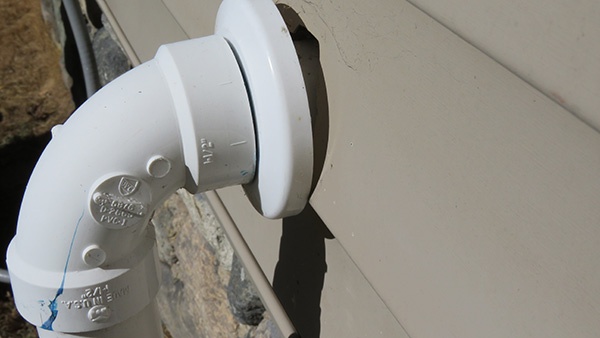 Penetrations – Whenever a home has a penetration (as in the oil fill and sump pump drain shown here), there is often a gap between the penetration and the siding. Fill that penetration with a good caulk to help prevent any water seeping in. Some pros leave a small caulk gap at the bottom of a seal so water can drain from the area.
Penetrations – Whenever a home has a penetration (as in the oil fill and sump pump drain shown here), there is often a gap between the penetration and the siding. Fill that penetration with a good caulk to help prevent any water seeping in. Some pros leave a small caulk gap at the bottom of a seal so water can drain from the area.
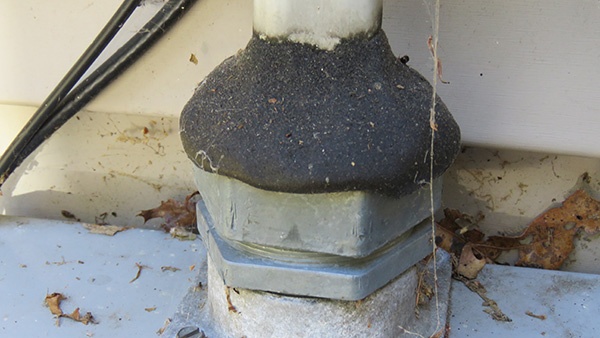 Electrical sources – Water and electricity do not mix. Check the cable coming from the street and make sure it is sealed. These service entrances are notorious for letting in water, and the water can then travel to the circuit or fuse box causing rust and general deterioration. In extreme cases, the electrical panel may need to be replaced. Electricians use a special non-hardening putty for this purpose and often simply pressing the putty against the cable will seal the entrance. If unsure, dab some exterior caulk on the entrance.
Electrical sources – Water and electricity do not mix. Check the cable coming from the street and make sure it is sealed. These service entrances are notorious for letting in water, and the water can then travel to the circuit or fuse box causing rust and general deterioration. In extreme cases, the electrical panel may need to be replaced. Electricians use a special non-hardening putty for this purpose and often simply pressing the putty against the cable will seal the entrance. If unsure, dab some exterior caulk on the entrance.
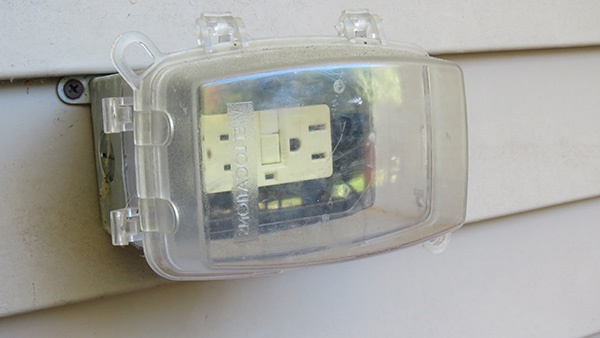 Also check any exterior electrical outlets. Make sure the outlets have a cover of some kind. In this example, the plastic cover is in place and operational. Sometimes these covers break and a replacement is needed.
Also check any exterior electrical outlets. Make sure the outlets have a cover of some kind. In this example, the plastic cover is in place and operational. Sometimes these covers break and a replacement is needed.
Exterior outlets should have GFCI protection, either at the outlet or in the circuit breaker box. This is where the power is turned off whenever a fault is detected. This inexpensive and sensible feature helps prevent electrocutions. If for some reason the outlet isn’t working, check the ground fault protection as part of your diagnosis (make sure nothing is obviously causing an issue).
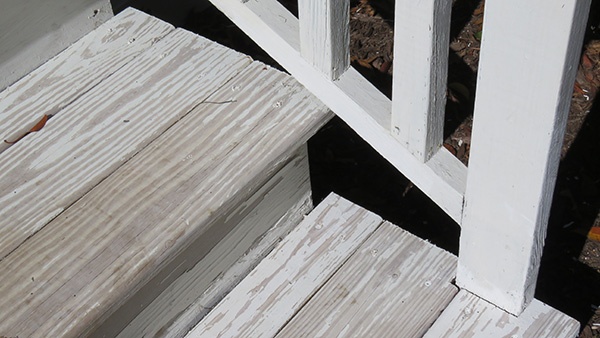 Paint – The steps on this home have a worn paint surface. It won’t take long to add a protective coat or two of paint to help protect the underlying wood surface. If the steps are prone to being slippery, a dusting of sand can add a little traction.
Paint – The steps on this home have a worn paint surface. It won’t take long to add a protective coat or two of paint to help protect the underlying wood surface. If the steps are prone to being slippery, a dusting of sand can add a little traction.
Stairs are often abused in homes by regular traffic. In winter, the abuse grows with shoveling and ice melt. It makes great sense to keep them protected.
 Garden hose – Hoses are hard to use in the winter because the water in them often freezes. So, drain the hoses and put them inside (in a shed, garage or other protected space).
Garden hose – Hoses are hard to use in the winter because the water in them often freezes. So, drain the hoses and put them inside (in a shed, garage or other protected space).
Some exterior faucets are considered freeze/frost proof. This is generally achieved by placing the valve inside the heated space of the building, and not on the outside where it is exposed to weather. Even so, if one of these valves is hooked up to a hose freezing in the winter, the expanding ice in the hose can break the faucet.
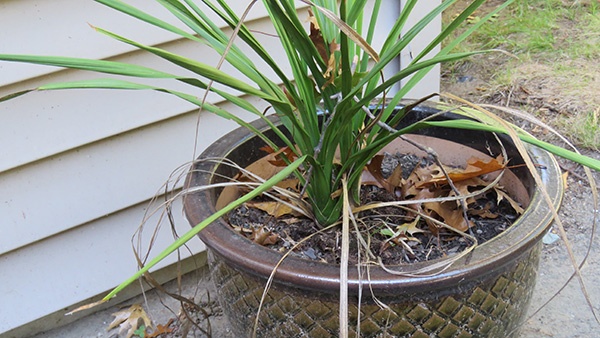 Plants – Those beautiful summer plants will often die at the first frost. Those beautiful pots will often crack at the first freeze, so it might be a good idea to move them inside to a warmer location. If you have an unfinished basement or garage, you may be able to keep the plan t alive over the winter if located near a window and watered. If not, find a friend with a green thumb for wintering the plants.
Plants – Those beautiful summer plants will often die at the first frost. Those beautiful pots will often crack at the first freeze, so it might be a good idea to move them inside to a warmer location. If you have an unfinished basement or garage, you may be able to keep the plan t alive over the winter if located near a window and watered. If not, find a friend with a green thumb for wintering the plants.
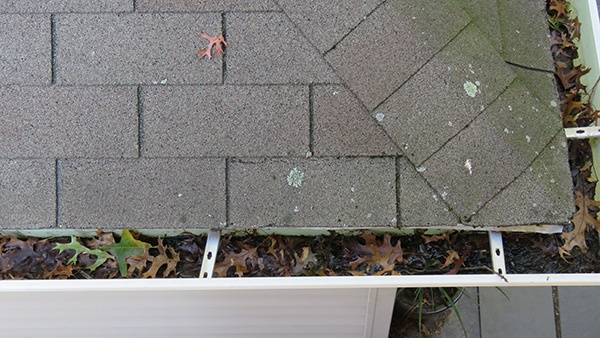 Gutters – Once the leaves have fallen, make sure your gutters are clear. There are many ways to do this, including using a leaf blower, scooping out the leaves, or using a water jet. The bottom line is the gutters need to be clear so melting snow can run down the drain.
Gutters – Once the leaves have fallen, make sure your gutters are clear. There are many ways to do this, including using a leaf blower, scooping out the leaves, or using a water jet. The bottom line is the gutters need to be clear so melting snow can run down the drain.
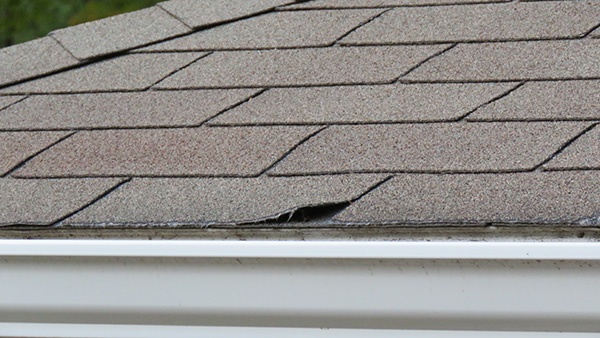 Roof – Using binoculars or a camera zoom, look over your roof. If you see missing shingles or edges curving up, a repair is needed. If edges are curling, it may be because the underlying nails are popping up.
Roof – Using binoculars or a camera zoom, look over your roof. If you see missing shingles or edges curving up, a repair is needed. If edges are curling, it may be because the underlying nails are popping up.
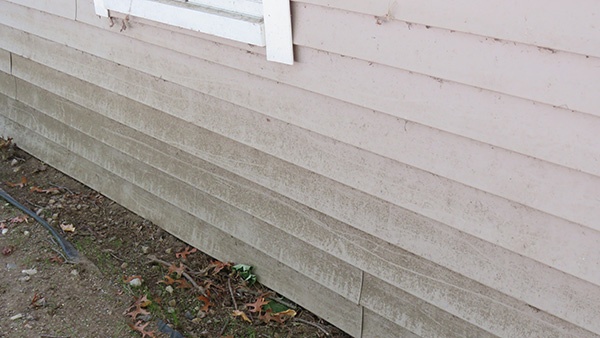 Siding – Eight inches of foundation between the ground and the bottom of the siding is recommended. This helps prevent water dripping off the roof or siding from getting in contact with the siding underlayment. On a house like the one shown here, a bit of earth removal would be required to achieve this.
Siding – Eight inches of foundation between the ground and the bottom of the siding is recommended. This helps prevent water dripping off the roof or siding from getting in contact with the siding underlayment. On a house like the one shown here, a bit of earth removal would be required to achieve this.
On any of these recommendations, consider your knowledge and capabilities. It might save you money in the long run to hire a professional to help.
For more ways to make your home energy-efficient, residents of Massachusetts can take advantage of a program from Mass Save. Click here to find out what happens at a home energy assessment.




.jpg)









Comment